10. Kelimutu Crater Lakes – Indonesia
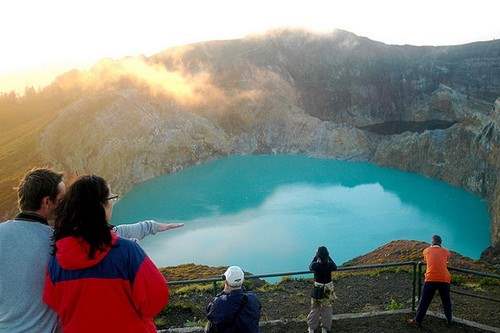
The town of Moni in central Flores island of Indonesia has a volcano named Kelimutu, which contains three stunning summit crater lakes which are counted among the most striking crater lakes in the world. The three lakes have different colours. The Tiwu Ata Mbupu is usually blue in colour. The water of the Tiwu Nuwa Muri Koo Fai is typically green. The Tiwu Ata Polo’s water is usually red.
9. Quilotoa Crater Lake – Ecuador
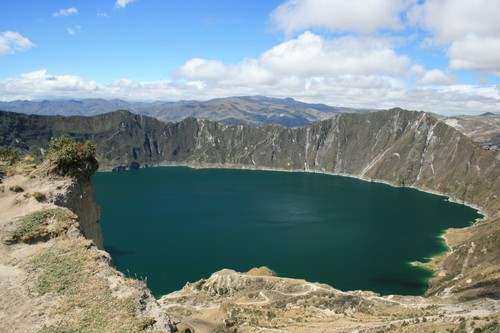
The Quilotoa Crater Lake is in Ecuadorian Andes, and was formed when a caldera got filled with water. The caldera has a width of 3 km. and was formed when the most western volcano of the mountain range in Ecuador collapsed, after a catastrophic eruption about 800 years ago. Since then, it has gathered water to form a lake of 250 m depth. The water is greenish because of the minerals.
8. Heaven Lake – North Korea
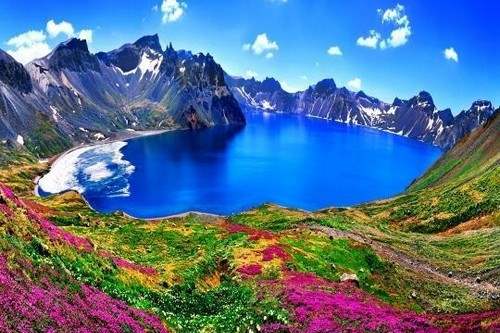
The Heaven Lake is one of the most stunning crater lakes in the world, located on the border between North Korea and China, lying partially in each country, within a caldera on top of the volcanic Baekdu Mountain. The caldera was formed in approximately 969 AD, as a result of a major eruption. It has a surface elevation of 2189.1 m. It remains covered in ice during the winter months.
7. Lake Taupo – New Zealand
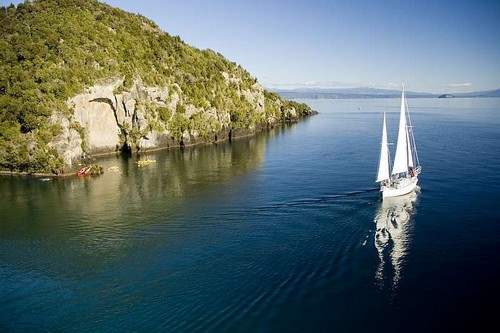
Lake Taupo is situated in the North Island of New Zealand. It has a surface area of 616 sq km, which makes it the largest lake in New Zealand in terms of surface area. Its deepest point is 186 m. It is drained by the Waikato River, the longest river in New Zealand. The lake lies in a caldera which was formed by a supervolcanic eruption, 26500 years ago. It is known for brown and rainbow trout.
6. Okama Crater Lake – Japan
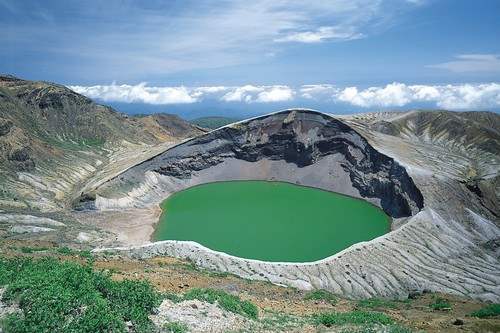
Okama is a crater lake located in Goshiki-dake, a tuff-cone in the central volcano in the group of stratovolcanoes of Mount Zaō in Honshu, Japan. One of the most beautiful crater lakes in the world, is known as the Five Colour Pond, since the water assumes various tinges depending on the weather. Formed in the 1720s by a volcanic eruption, the lake has a diameter of 360 and a depth of 60 m.
5. Mount Katmai Crater Lake – Alaska, USA
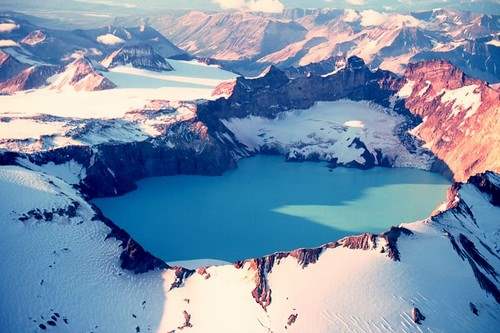
Mount Katmai, located within the Katmai National Park and Preserve on the Alaska Peninsula, in Alaska, USA, is a stratovolcano has a central lake-filled caldera which is about 4.5 by 3 km in area. It was formed during the Novarupta eruption in 1912. There are small glaciers that have formed on a bench in the caldera, beside the lake whose surface elevation reaches a maximum height of 1286 m
4. Deriba Crater Lake – Sudan
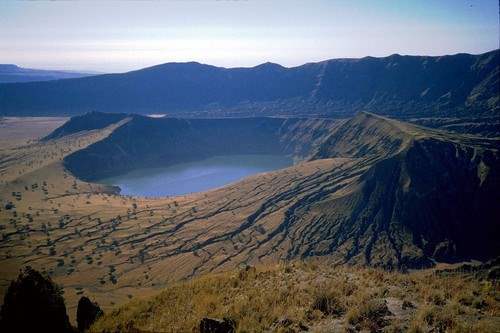
The Deriba Crater, with an elevation of 3042 m, is the highest point of Jebel Marra, located in Darfur in the west of Sudan. The lake is formed in a caldera. The outside crater has a diameter varying from 5km to 8 km. The Deriba Caldera was formed as a result of an explosive eruption of the Jebel Marra Volcano, which took place approximately 3500 years ago. The volcano now lies in a dormant state.
3. Lonar Crater Lake – India
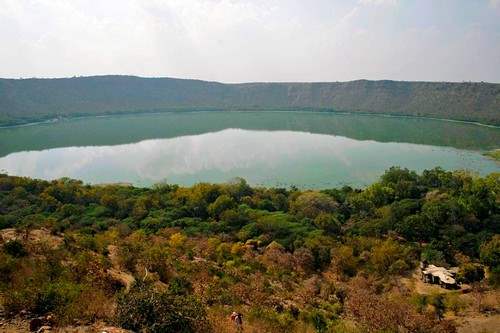
The Lonar Crater Lake is a saline soda lake, located at Lonar in Maharashtra, India. It was created by a meteor impact during the Pleistoscene Epoch, and is aged at about 52,000 years, give or take 6000 years. Newer reports show that it could be 570000 years old, give or take 47000 tears, thus making it the oldest crater lake, and one of the largest, with a circumference of 2 km and a depth of 100 m.
2. Kerið Crater Lake – Iceland

The Kerið Crater Lake is located in the Grímsnes area in south Iceland, on the Golden Route. This volcanic crater lake is one of the many lakes in the Western Volcanic Zone of Iceland. But, its caldera, made of mainly red volcanic rock, is still intact and recognizable. It is about 55m deep, 170 m wide and 270 m across. Due to the minerals from the soil, its water is opaque and vividly aquamarine.
1. Crater Lakes in Albertine Rift – Africa
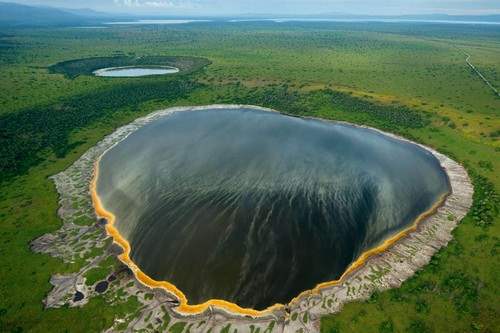
The Albertine Rift in Africa is edged with a number of the highest mountains, including the Ruwenzori range, Mitumba Mountains and Virunga Mountains. Among with lie the Rift Valley lakes, among the deepest crater lakes in the world. Lake Tanganyika, for instance, is 1470 m deep. Formed as a result of a great rift and volcanic explosions, these lakes attract tourists from all over the globe.
There are several other wonderful crater lakes in the world. These were formed at different times in the history of time, and are among the most visual linchpins, adding to the vistas and dotting the surface of the earth with scenic landmarks, and attracting tourists from all over the globe.
No comments:
Post a Comment